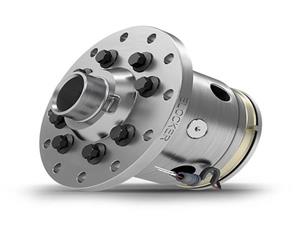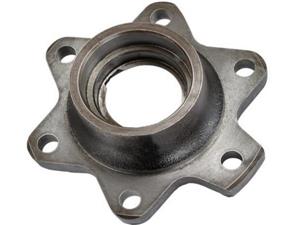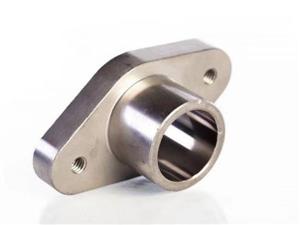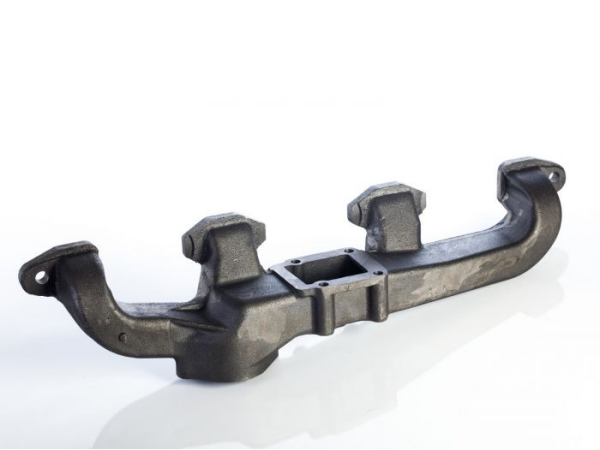Technical requirements for steel castings
1. Casting process characteristics of cast steel
Cast steel has higher mechanical properties than cast iron, but its casting properties are poorer than cast iron. Due to the high melting point of cast steel, liquid steel is prone to oxidation, poor fluidity, and large shrinkage, with a volume shrinkage of 10-14% and a linear shrinkage of 1.8-2.5%. In order to prevent defects such as insufficient pouring, cold shuts, shrinkage cavities, porosity, cracks, and sand sticking in steel castings, it is necessary to take more complex technological measures than cast iron:
(1) Due to the poor fluidity of molten steel, in order to prevent cold shuts and insufficient pouring of steel castings, the wall thickness of steel castings should not be less than 8mm; The structure of the gating system should be as simple as possible, and the cross-sectional size should be larger than that of cast iron; Adopt dry casting or hot casting; Increase the pouring temperature appropriately, generally from 1520 ° to 1600 ° C. As the pouring temperature is high, the superheat degree of molten steel is high, and the liquid state retention time is long, the fluidity can be improved. However, if the pouring temperature is too high, defects such as coarse grain size, thermal cracking, porosity, and sand adhering can occur. Therefore, for small, thin-walled, and complex shaped castings, the pouring temperature is about the melting point temperature of steel+150 ℃; The pouring temperature of large, thick wall castings is about 100 ℃ higher than their melting point.
(2) Due to the fact that the shrinkage of cast steel greatly exceeds that of cast iron, in order to prevent shrinkage cavities and porosity defects in castings, measures such as riser summation, chilled iron, and subsidies are mostly used in casting processes to achieve sequential solidification.
In addition, in order to prevent shrinkage, porosity, porosity, and crack defects in steel castings, it is necessary to improve the yield and permeability of the sand mold or core by making its wall thickness uniform, avoiding sharp corners and rectangular structures, adding sawdust to the mold sand, adding coke to the core, and using hollow cores and oil sand cores.
The melting point of cast steel is high, and the corresponding pouring temperature is also high. The interaction between molten steel and mold materials at high temperatures is extremely prone to sand adhering defects. Therefore, artificial quartz sand with high fire resistance should be used as the mold, and a coating made of quartz powder or zirconium sand powder should be brushed on the surface of the mold. In order to reduce the source of gas, improve the fluidity of molten steel, and improve the strength of the mold, most steel castings are cast using a dry or quick dry mold, such as using CO2 hardened sodium silicate sand mold.
2. Heat treatment of steel castings
Steel castings shall be used after heat treatment. Due to the existence of casting defects such as pores, cracks, shrinkage cavities, porosity, coarse grains, uneven microstructure, and residual internal stress inside the steel castings in the as-cast state, the strength, especially the plasticity and toughness of the steel castings are greatly reduced.
In order to refine grains, homogenize microstructure, and eliminate internal stress, steel castings must undergo normalizing or annealing treatment. Normalized steel has higher mechanical properties and lower cost than annealed steel, so it is widely used. However, due to the fact that normalizing treatment can cause greater internal stress than annealing, it is only suitable for steel castings with a carbon content of less than 0.35%. Because low-carbon steel castings have good plasticity, they are not easy to crack when cooled. In order to reduce internal stress, steel castings should also undergo high-temperature tempering after normalizing. For steel castings with a carbon content ≥ 0.35%, complex structures, and prone to cracks, only annealing treatment can be performed. Steel castings should not be quenched, otherwise they can easily crack.






